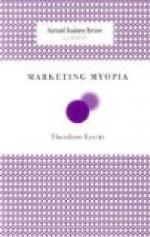THE GERM THEORY AND ITS APPLICATIONS TO MEDICINE AND SURGERY
[Footnote: Read before the French Academy of Sciences, April 29th, 1878. Published in Comptes Rendus de l’ Academie des Sciences, lxxxvi., pp. 1037-43.]
The Sciences gain by mutual support. When, as the result of my first communications on the fermentations in 1857-1858, it appeared that the ferments, properly so-called, are living beings, that the germs of microscopic organisms abound in the surface of all objects, in the air and in water; that the theory of spontaneous generation is chimerical; that wines, beer, vinegar, the blood, urine and all the fluids of the body undergo none of their usual changes in pure air, both Medicine and Surgery received fresh stimulation. A French physician, Dr. Davaine, was fortunate in making the first application of these principles to Medicine, in 1863.
Our researches of last year, left the etiology of the putrid disease, or septicemia, in a much less advanced condition than that of anthrax. We had demonstrated the probability that septicemia depends upon the presence and growth of a microscopic body, but the absolute proof of this important conclusion was not reached. To demonstrate experimentally that a microscopic organism actually is the cause of a disease and the agent of contagion, I know no other way, in the present state of Science, than to subject the microbe (the new and happy term introduced by M. Sedillot) to the method of cultivation out of the body. It may be noted that in twelve successive cultures, each one of only ten cubic centimeters volume, the original drop will be diluted as if placed in a volume of fluid equal to the total volume of the earth. It is just this form of test to which M. Joubert and I subjected the anthrax bacteridium. [Footnote: In making the translation, it seems wiser to adhere to Pasteur’s nomenclature. Bacillus anthracis would be the term employed to-day.— Translator.] Having cultivated it a great number of times in a sterile fluid, each culture being started with a minute drop from the preceding, we then demonstrated that the product of the last culture was capable of further development and of acting in the animal tissues by producing anthrax with all its symptoms. Such is—as we believe—the indisputable proof that anthrax is A bacterial disease.




